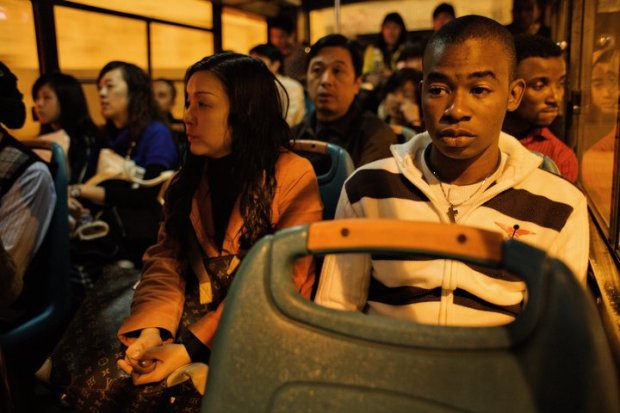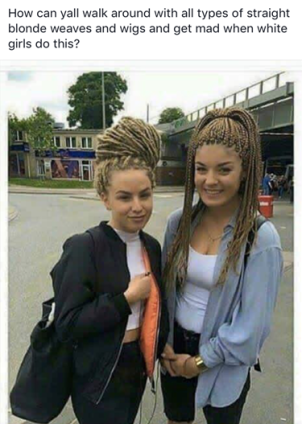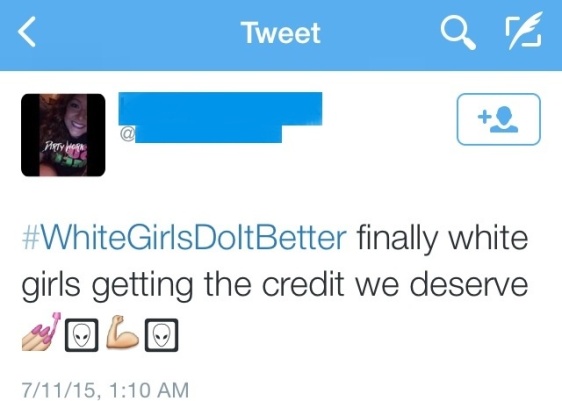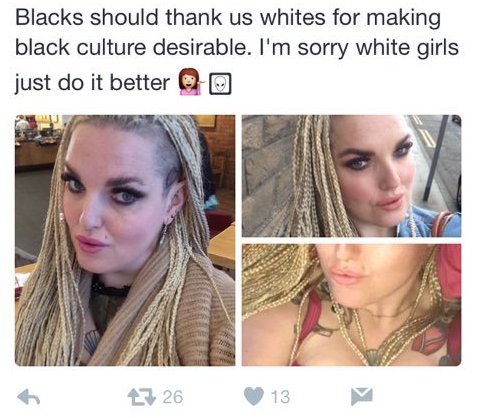According to Hackman (2016), black people are labelled as being ”aggressive“, “criminals” and even, “dirty“. This commercial is a great example that portrays one of those labels – dirty.
The video begins with an Asian woman doing her laundry. A black man is seen whistling at her. He is spinning a paint brush in his hand, indicating that he works a blue-collar job. The lady then proceeds to shove him into the washing machine.

He came out of the washing machine as a clean, pale-skinned Asian man, who she falls in love with. So the question is – Is White The New Black?
Based on this advertisement alone, it seems that white is, indeed, the new black. In addition to this, there are a few aspects of this commercial that can be pointed out:
1. Black people are only able to acquire low-skilled jobs.
2. Black people are dirty.
3. Black men are undesirable.
This commercial is not an isolated case of racial inequality in today’s global media. Even in a place where African migrants acquired at least 3% of Guangdong’s population, black people are still being discriminated upon.
In an online Chinese forum known as Baidu Tieba, there was a post created in regards to the African population in Guangdong, China. The following consists of some examples (comments have been translated into English):
“They take part in drug trafficking, harassment of women, and fighting, which seriously disturbs law and order in Guangdong.”
“China is undergoing a black invasion”.
“Thousands of years of Chinese blood has become polluted”.
Connotations to Africa’s underdevelopment and poverty were even indirectly mentioned in one comment –“Africans have a high rate of AIDS and the Ebola virus that can be transmitted via body fluids… If their population keeps growing, China will change from a nation-state to an immigration country, from a yellow country to a black-and-yellow country.”
Yes. That is correct. This commenter declared that the “black invasion” would lead to China transforming into a black-and-yellow country.

Let us take a look at another example of racial inequality in the media.
According to Mathes (2016), Cultural Appropriation refers to “borrowing” certain elements within a culture – it can either be the cultural practice through lifestyle, distinctive style choices, or the possession of cultural objects.
An important thing to note about Cultural Appropriation, is that the basis of these choices are made by an individual who chooses to only follow certain aspects of a specific culture group that appeals to the individual – (Devin & Machart, 2015). Devin & Machart (2015) further argue that the “interpretational demands of culture” acts like a filtering machine: allowing the intriguing characteristics of a certain cultural group to seep through due to its high demands, whilst the remaining “unappealing” cultural aspects are completely ignored.
This picture below is from a Twitter hashtag #WhiteGirlsDoItBetter. The main purpose of this particular hashtag, aims to discriminate women of colour, directly stating that white women are able to culturally appropriate cultural aspects from the black culture – and do it better. In this picture below, it can be seen that two white girls are wearing dreadlocks. The comments then proceed to state that black women are not shamed for wearing their hair the same way white women do, yet white women are shamed for wearing their hair the same way black women do.

Let us take a look at another example. The Tweet below was also taken from the hashtag #WhiteGirlsDoItBetter. In this comment, there are subtle indications that white women are “finally” being recognised for culturally appropriating cultural aspects and clothing styles of black women – whilst white women are considered more appealing than black women.

In another Tweet below, a Twitter boasts about her “corn rose” (which is actually supposed to be “corn rows” – a type of hairstyle that consists of multiple tight braids). She also states that white people are entitled to receiving a “thank you” from black people and on top of that – the “corn rose” hairstyle looks much better on white girls than on black girls.

To conclude, racial inequality in today’s global media exists. And in the aforementioned cases, it is aimed towards the African community. Although Africa is still a developing country, the emerging notion of soft power plays an immense role in today’s global media (Nye 2004), and in the way the audience perceives them.
When black people are portrayed in commercials, they are seen as unskilled, dirty, and undesirable.
When black people are portrayed in social media with certain hairstyles, “white girls do it better” #WhiteGirlsDoItBetter.
When black people are portrayed in movies, they are seen as villains, or the unintelligent, dumb, funny character.
When black people are portrayed in videos, pictures, and even the news, they are seen as poor, starving, sick, or dying – which leads to Baidu Tieba users to believe that black people will “pollute” China with their diseases.
Black people are portrayed in this light, with very little autonomy and agency to alter this view. The media projects them in a way that reinforces this ideology. Will this diminish?
References:
Devin, F and Machart, R, 2015. Cultural Essentialism in Intercultural Relations. 1st ed. The Editor.
Hackman, R. 2016. Is the online surveillance of black teenagers the new stop-and-frisk? [Online]. Available: https://www.theguardian.com/us-news/2015/apr/23/online-surveillance-black-teenagers-new-stop-and-frisk
Matthes, E.H., 2016. Cultural Appropriation Without Cultural Essentialism?. 2nd ed. Wellesley, Massachusetts, United States: Wellesley College.
Nye, Jr., J. 2004. Soft Power: The Means to Success in World Politics. New York Public Affairs.